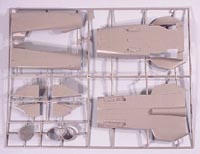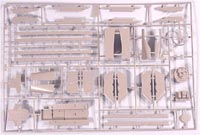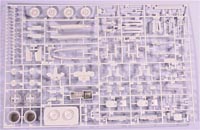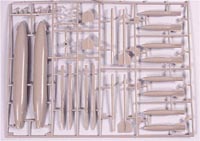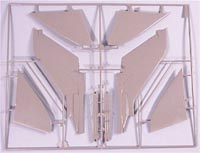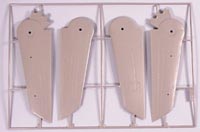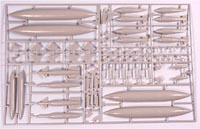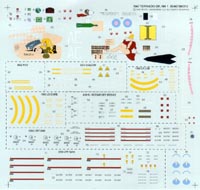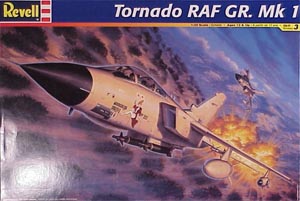 Revell
1/32 Panavia
Revell
1/32 Panavia
Tornado GR.1
 Revell
1/32 Panavia
Revell
1/32 PanaviaTornado GR.1
By Michael Benolkin
Background
In 1965, the British Aerospace TSR.2 strike aircraft was cancelled, due to cost overruns and other difficulties. Designed to replace the Canberra, the TSR.2 mission still needed to be filled. For a short time, the British MoD considered a variant of the General Dynamics F-111, but that contract would also be abruptly cancelled. In the meantime, Germany and Italy were also facing upcoming voids in their strike capabilities. After a number of successful meetings, the Tornado concept was born.
Built by the multi-national Panavia company, the Tornado was designed as a variable geometry fighter that can penetrate into hostile airspace at supersonic speeds as well as operate from short, ad-hoc runways. The Tornado would be one of the only operational fighters to feature thrust reversers that can automatically deploy on touchdown and significantly reduce landing roll with minimal wear on the brakes and no need for a drogue chute. The aircraft also featured a two-place cockpit, recognizing that the workload in flying, navigating, and operating the aircraft's advanced systems was more than one person can effectively manage.
The movable wings are mounted high on the fuselage, giving ample ground clearance for external underwing stores. The wing is designed to pivot the four underwing pylons to compensate for sweep. That takes a significant amount of strength and engineering to suspend a pylon and external stores on a single pivot!
The Tornado was developed in a number of variants, a strike/reconnaissance version for the RAF, a similar version for the Luftwaffe and Italian Air Force, a maritime strike aircraft for the German Navy, a Wild Weasel (ECR) version for the Luftwaffe, and an Air Defense Fighter (ADF) version for the RAF. To date, the only export customer for the Tornado outside the tri-national team is Saudi Arabia, operating both strike and ADF versions.
The Tornado fired its first shots in anger during Operation Desert Storm. Some initial losses were due to getting too close to Iraqi air defenses while using the JP runway denial system. Nevertheless, the Tornado operated as well, if not better than hoped. The RAF realized that the Tornado needed the ability to deliver laser-guided munitions, and procurement was underway for the TIALD system. TIALD was not ready for the Tornado during the opening days of the conflict, so the venerable Buccaneer was brought over to designate targets with its laser pod while the Tornados delivered the goods.
|
Conclusion
The series of 1/32 aircraft that have been coming from Revell/Germany, including the MiG-21MF, the Tornado IDS, the Hawker Hunter, and now the Tornado GR.1, are all very welcome additions to the large-scale builders' collections. It is great to see Revell-Monogram issue these kits in the US/North American market as that also equates to a lower retail price. You'll want at least one of these kits to build, and another for the useful parts for other projects.
If you are also so-inclined to super detail this aircraft (and this is a great model to work with), you'll want to look at the 1/32 Tornado details available from Paragon (including flaps and slats), CAM (including ejection seats and an avionics bay), and Flightpath (which is set that is in and out of production, but includes some of the most intricate detailing I've seen for a kit). Check out the Hannants website for any of these items. My sincere thanks to Revell-Monogram for this review sample!
